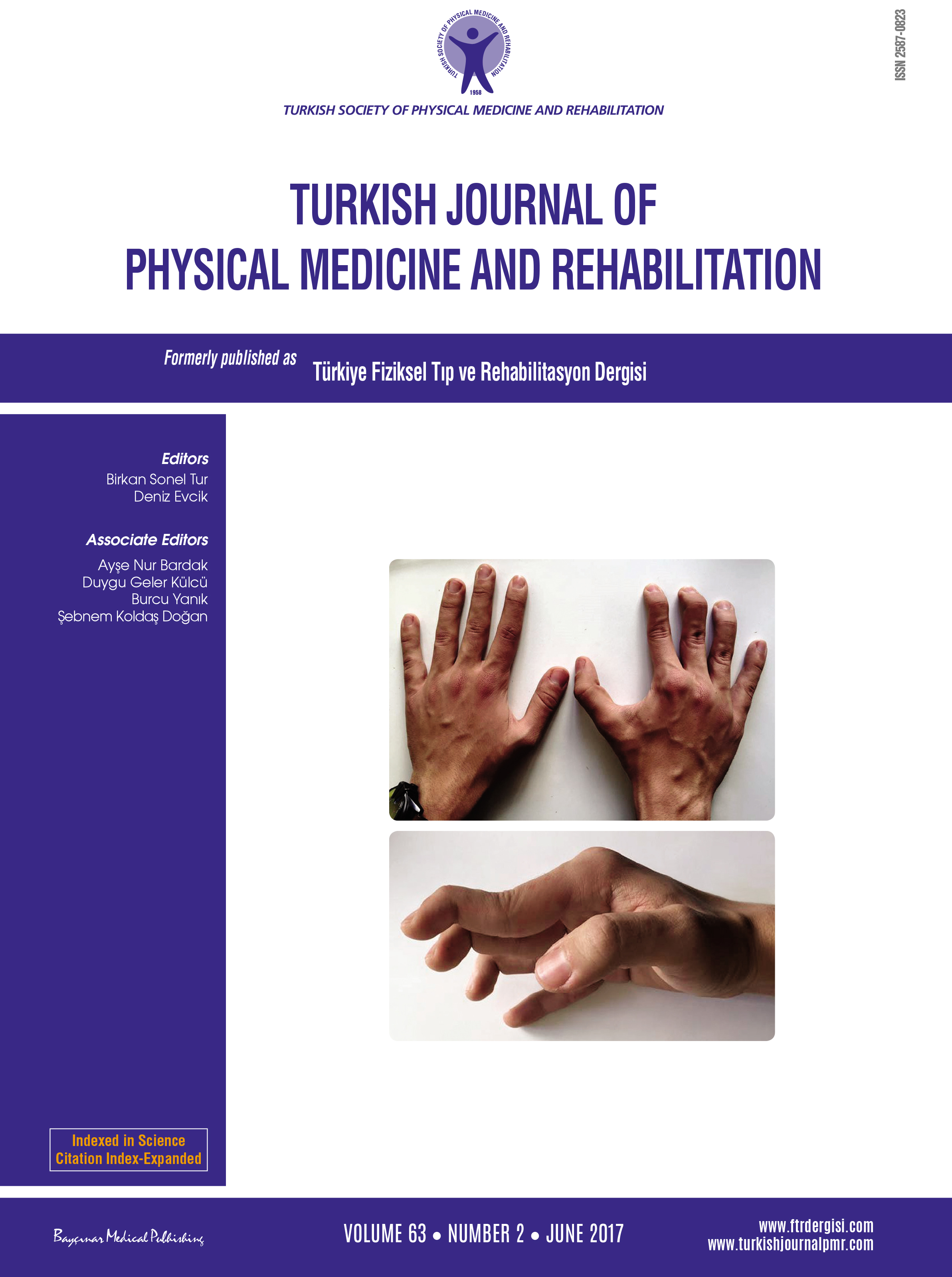Effect of ankle foot orthosis on gait parameters and functional ambulation in patients with stroke
2 Department of Physical Medicine and Rehabilitation, Fizyocare Physical Therapy and Rehabilitation Center, Ankara, Turkey
3 Department of Physical Medicine and Rehabilitation, Lefke European University, Northern Cyprus DOI : 10.5606/tftrd.2017.129 Objectives: This study aims to investigate the effect of ankle foot orthosis (AFO) on temporospatial parameters, ankle kinematics, and functional ambulation level in patients with stroke.
Patients and methods: Records of 286 adult patients with stroke assessed in the gait and motion analysis laboratory between April 2005 and January 2013 were reviewed. The data of 28 patients (16 males, 12 females; mean age 43.2±15.9 years; range 20 to 72 years) who were analyzed with and without AFO during the same session were selected for the study. Temporospatial parameters (walking speed, cadence, opposite foot contact, double support time, single support time, step time, and step length) and ankle kinematics (ankle dorsiflexion at initial contact and midswing) were measured using the Vicon 512 motion analysis system. The video and medical records of patients were examined to determine their ambulation level according to Functional Ambulation Category.
Results: Walking speed, cadence, and ankle dorsiflexion at initial contact and midswing were significantly increased while walking with
AFO compared to walking barefoot (p<0.05). There were significant reduction in step time and significant increase in step length and
opposite foot contact with AFO on the affected side (p<0.05). Single support time reduced significantly with AFO on the unaffected side
(p<0.05). Functional Ambulation Category score improved significantly with use of AFO (p<0.05).


















